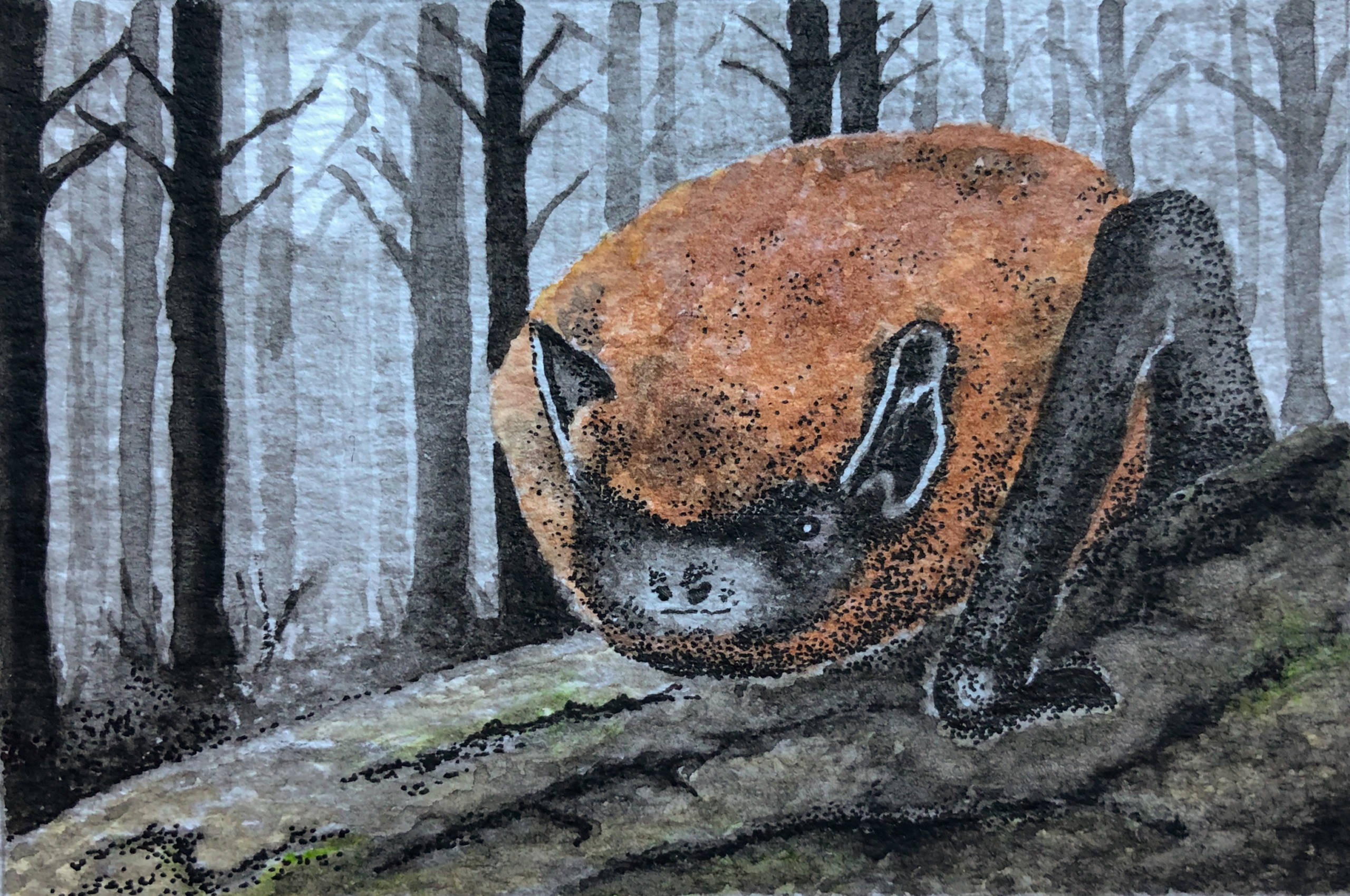A closer look at British wildlife
Join Rebecca for insight into one of our most fascinating nocturnal mammals, through her words and beautiful artwork.
Leading a nocturnal life at rapid speed, bats have become shrouded in mystery and superstition. Their associations with Halloween and Dracula have given them an unfairly spooky reputation, but bats are fascinating creatures. Despite looking quite rodent-like, bats are more closely related to humans than mice! In the UK, the species we are most likely to see on an evening walk are pipistrelles.
Pipistrelle bats are some of Britain’s tiniest mammals and can weigh as little as three grams. Despite their size, pipistrelles are hardy predators and can eat up to 3000 insects in one night. There are two very similar pipistrelle species – common and soprano – and at first glance they look identical. In fact, they weren’t classed as separate species until the 1990s. Commons and sopranos can be described as “cryptic species”, which means they look similar but are genetically very different and cannot breed with each other. Although sopranos are slightly smaller, both species can be seen flying over open woodland, farmland and urban gardens just after sunset.
The most significant difference between the pipistrelles is heard and not seen: the frequency of their calls. All bats use echolocation when hunting. By sending out sound waves that bounce off their prey and produce echoes, the bats can determine the size and distance of their target and seize it from the air. Each bat species produces these ultrasound calls at a different frequency. While common pipistrelles tend to peak at 45kHz, sopranos are typically higher and reach 55kHz. To put that into perspective, the highest frequency humans can hear is about 20kHz. So, to identify a pipistrelle by its vocalisation, we use bat detectors. These devices slow down the vocalisations until they are low enough for us to hear them, and are displayed on a colour spectrogram in little peaks.
One of the biggest threats facing bats in the UK is building and development work, as many bats depend on buildings for roosts. Loss of habitat combined with other hazards such as cats and chemical treatments of building materials are all having a detrimental effect on populations. However, there are ways to help! As well as keeping cats indoors at night and reducing the use of artificial lighting, you can make your garden a safe space for bats. Suggestions from the Bat Conservation Trust include planting night-scented flowers, installing a pond to encourage more invertebrates or setting up a bat box.
As the evenings get warmer and lighter, take a look up and you might see dark shapes zooming overhead as they snatch insects on the wing. During the day this space is dominated by birds, but as the daylight fades, it’s the bats who take control of the air.

Discover bats on our Bats & Pizza Nights at Wild Northumbrian, Bats & Brownies Nights at Racy Ghyll Farm or Ouseburn Bat Safaris!

